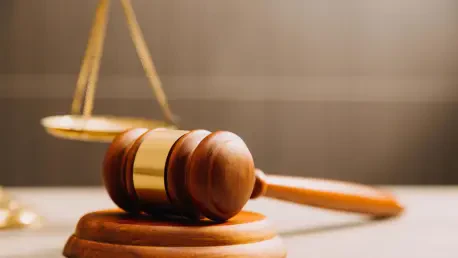What happens when the guardian of civil rights in America faces a crisis so severe that its very mission hangs in the balance? The U.S. Department of Justice’s Civil Rights Division (CRT), tasked with protecting fundamental freedoms, is reeling from a staggering loss of over 60% of its workforce since early this year. This isn’t just a staffing issue—it’s a profound challenge to the enforcement of laws that ensure equality in education, employment, and voting. As reassignments and shifting priorities reshape the division, the nation watches a pivotal institution struggle to uphold its historic role.
The Stakes of a Shrinking Civil Rights Force
The importance of this unfolding situation cannot be overstated. The CRT, established under the 1957 Civil Rights Act, has been a bedrock of federal efforts to combat discrimination and secure equal opportunities for all Americans. With hundreds of employees departing through incentivized exits and early retirements, the division’s ability to address pressing issues like voter suppression and workplace inequality is under severe strain. This crisis extends beyond a single agency, reflecting a broader trend of workforce reductions across federal departments, including the DOJ’s loss of 4,500 staff and the Department of Agriculture shedding over 15,000. The question looms: who will safeguard the rights of the most vulnerable when the protectors themselves are diminished?
Unpacking the Crisis: A Division in Turmoil
The CRT’s current challenges are multifaceted, beginning with an unprecedented staffing shortage. Key sections such as Educational Opportunities, Employment Litigation, and Voting are in desperate need of personnel, with some offices losing up to 75% of their attorneys. Urgent requests for voluntary reassignments have been issued, with the specter of involuntary transfers for those who don’t step forward. This scramble to fill gaps reveals a division stretched thin, struggling to maintain even basic operations in critical areas of civil rights enforcement.
Beyond numbers, the mission of the CRT is undergoing a dramatic transformation under the leadership of Harmeet Dhillon, nominated by President Trump to head the division. The focus has shifted toward new priorities, including combating antisemitism on college campuses—defined broadly to encompass protests against the Israeli government—and addressing voter fraud prevention. This pivot often comes at the expense of traditional enforcement areas like race-based pay discrimination, raising concerns about the division’s core purpose being sidelined by political agendas.
Adding to the complexity, resources are being diverted to initiatives like the Civil Rights Fraud Initiative, launched earlier this year by Deputy Attorney General Todd Blanche. This program targets recipients of federal funds for promoting diversity, equity, and inclusion (DEI) or supporting transgender women in sports, pulling staff away from longstanding civil rights work. The tension between historical mandates and current objectives has created a rift, leaving many to wonder if the division can still fulfill its original intent.
Voices from the Frontlines
Criticism of these changes has been sharp and vocal. Senator Peter Welch (D-Vt.) has described the situation as an unprecedented “dismantling” of the CRT, highlighting in a recent report that career attorneys are being pushed to prioritize presidential goals over federal civil rights laws. He specifically pointed to the Voting Section’s new focus on voter database accuracy and fraud prevention, arguing that it restricts access rather than protects it—a significant departure from its traditional mission.
Meanwhile, the administration’s perspective, though not directly stated due to a lack of official comment, can be inferred from the creation of new working groups and initiatives. These moves suggest a belief that emerging issues like antisemitism and voter fraud demand immediate attention, even if it means reallocating resources. Yet, the reassignment of top Voting Section officials to unrelated tasks, such as processing Freedom of Information Act requests, has fueled accusations that expertise is being intentionally diluted, deepening the divide over the division’s direction.
The human impact of these shifts is palpable among staff and advocates. Reports indicate a growing unease within the CRT, as remaining employees grapple with wrapping up existing cases under tight deadlines while facing potential involuntary transfers. This atmosphere of uncertainty underscores a broader struggle to maintain morale and effectiveness in an agency caught between competing visions of its role in American society.
Broader Implications Across Government
The CRT’s predicament is not an isolated event but part of a larger pattern of federal workforce reductions. The DOJ’s loss of thousands of employees mirrors similar cuts in other agencies, signaling a systemic approach to reshaping government operations. This trend raises critical questions about the capacity of federal institutions to address complex societal challenges when resources and personnel are slashed at such a scale.
Moreover, the redirection of the CRT’s focus reflects a deliberate policy shift that could have lasting effects on civil rights protections. For instance, the diminished emphasis on employment discrimination cases may leave countless workers without recourse for unfair treatment. Similarly, changes in the Voting Section’s priorities could impact access to the ballot box for marginalized communities, altering the democratic process in subtle but significant ways.
The ripple effects extend to public trust in government. As enforcement of anti-discrimination laws weakens, confidence in federal protections may erode, particularly among communities that rely on the CRT to address systemic inequities. This erosion could fuel broader social tensions, highlighting the far-reaching consequences of decisions made within the halls of the DOJ.
Charting a Path Forward: Solutions and Strategies
Addressing this crisis demands immediate and coordinated action from various stakeholders. One crucial step is to closely monitor the impact of staff reassignments on ongoing civil rights cases, particularly in education and employment sectors. Transparency in how these shifts are managed can help prevent further erosion of protections, ensuring that critical work isn’t abandoned amid bureaucratic reshuffling.
Engaging with policymakers offers another avenue for change. Advocates and citizens alike can urge congressional representatives to conduct oversight of the CRT’s mission alterations and push for restored funding to rebuild staffing levels. Such efforts could help realign the division with its historical role of safeguarding equal opportunities for all, countering the current trend of resource diversion.
Raising public awareness is equally vital. Highlighting specific instances where civil rights enforcement falters due to shortages or priority shifts can build pressure for accountability. Social media and community platforms provide powerful tools to amplify these stories, ensuring that the struggles within the CRT remain in the national spotlight. Through these combined efforts, there is potential to preserve the integrity of an institution central to American values.
Reflecting on a Critical Moment
Looking back, the Civil Rights Division of the DOJ stood at a crossroads during a period of immense challenge. The staggering loss of staff, coupled with a controversial shift in mission, had placed immense pressure on an agency long regarded as a pillar of equality. Each reassignment and policy change had reshaped the landscape of federal protections, leaving an indelible mark on how rights were enforced.
The path ahead demanded vigilance and action. Stakeholders had to prioritize transparency, ensuring that the public remained informed about the division’s capacity to address discrimination. Policymakers needed to consider legislative measures to bolster funding and staff, while communities had to continue advocating for the issues that mattered most. Only through such sustained efforts could the balance between emerging priorities and historic mandates be restored, securing a future where civil rights remained a cornerstone of American justice.









